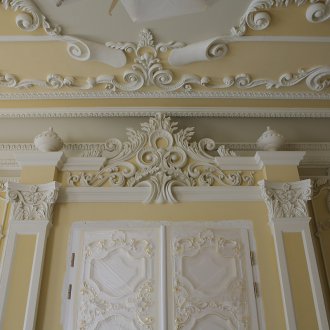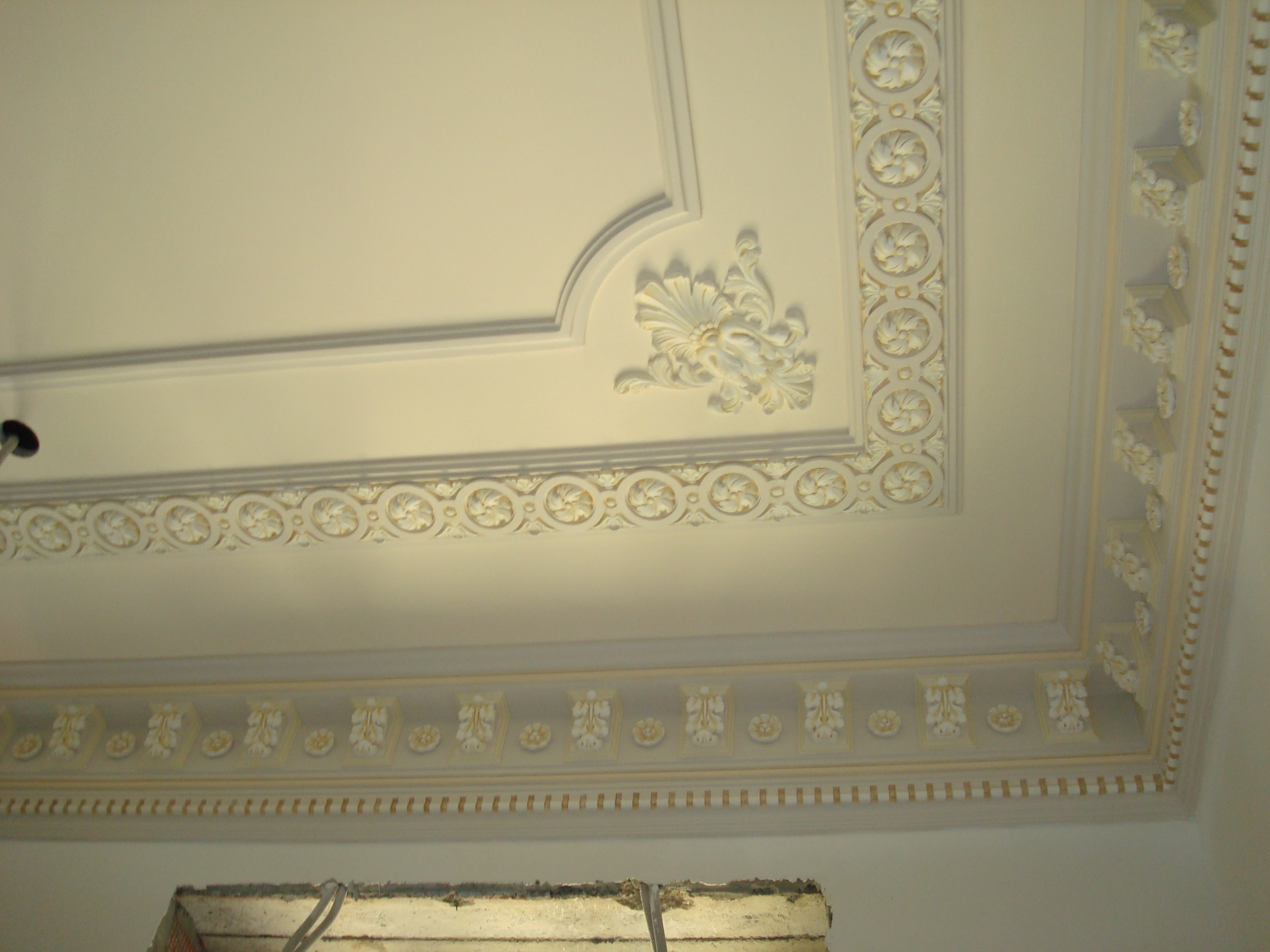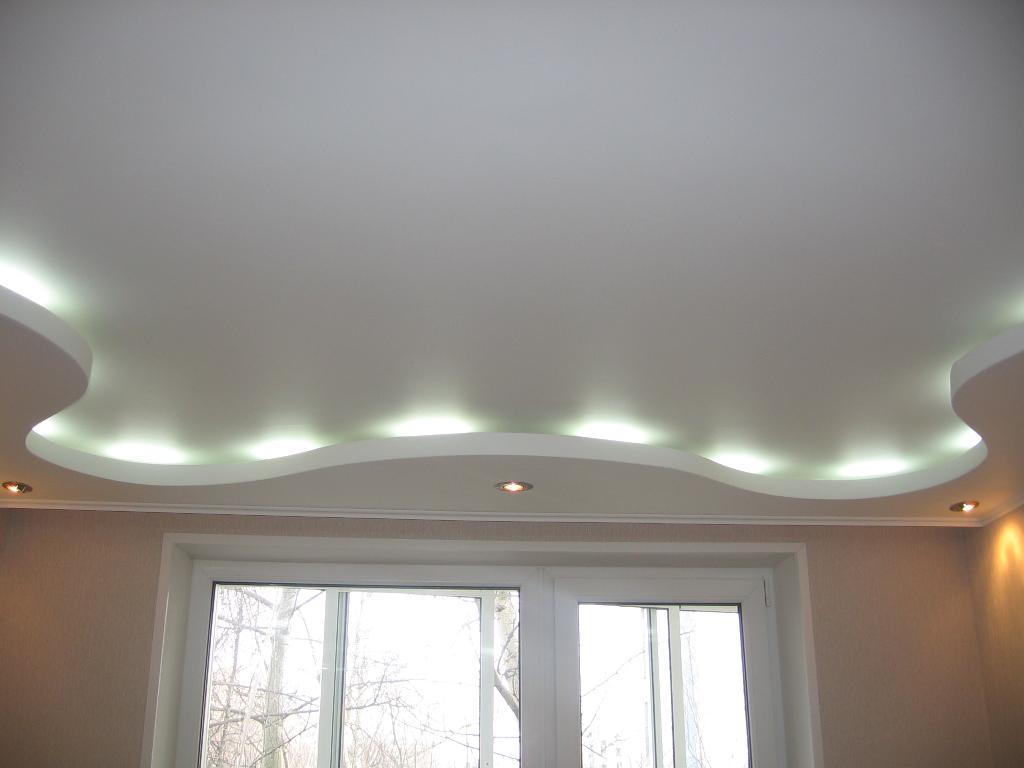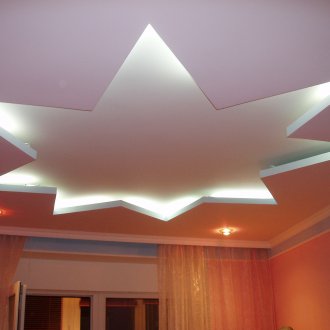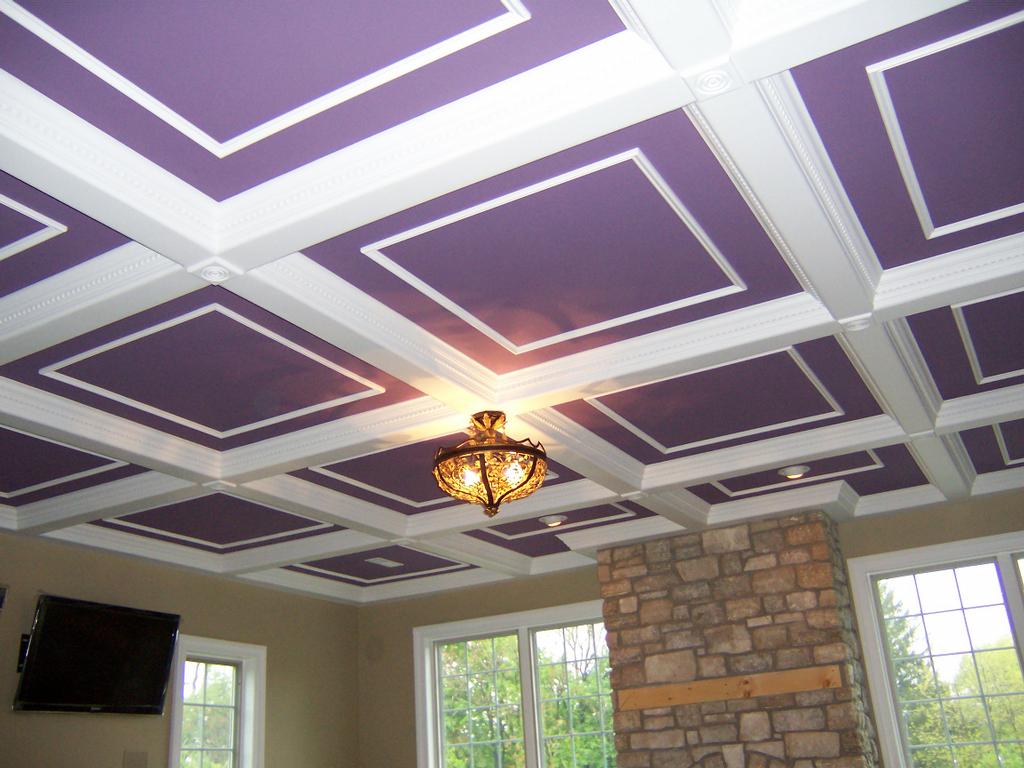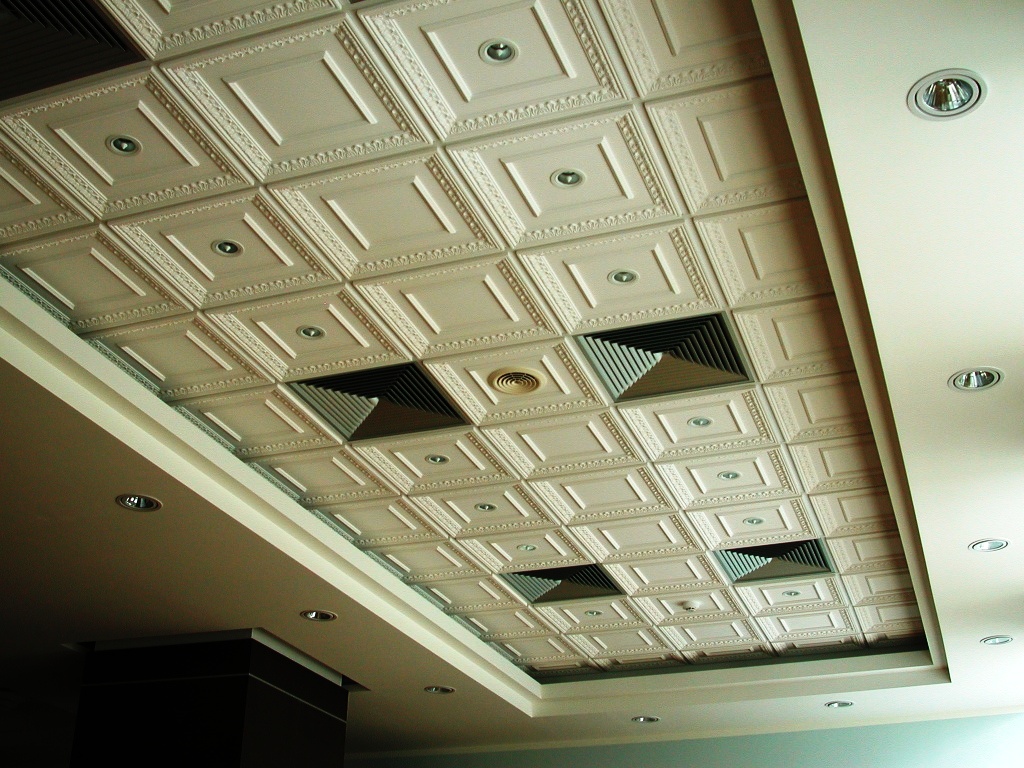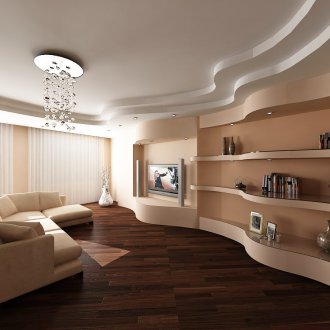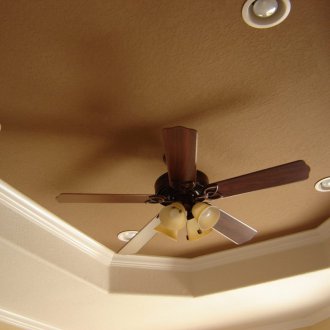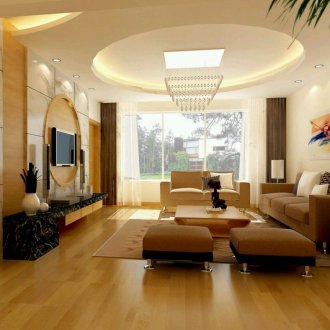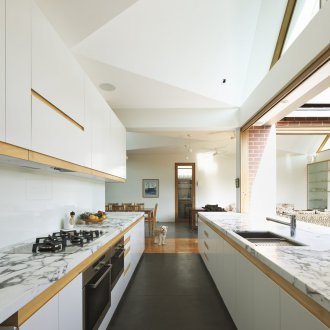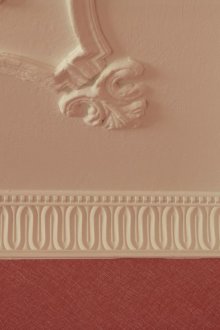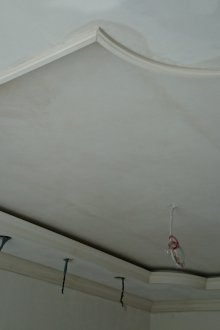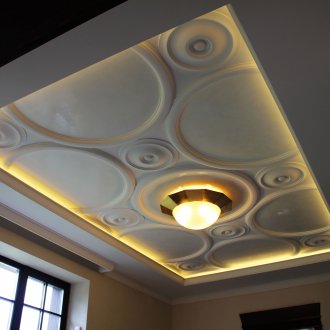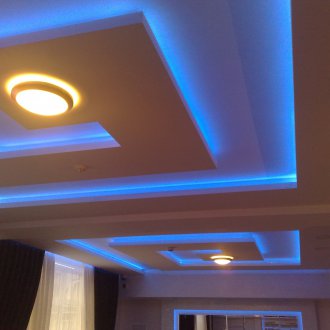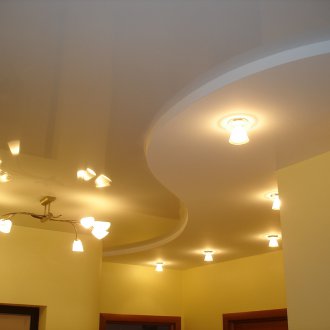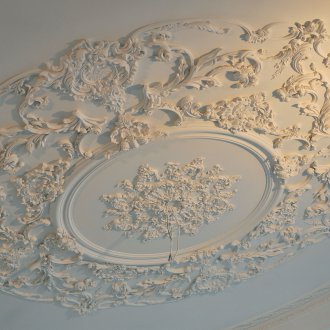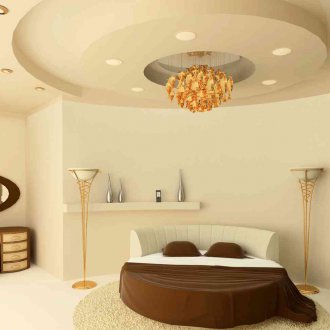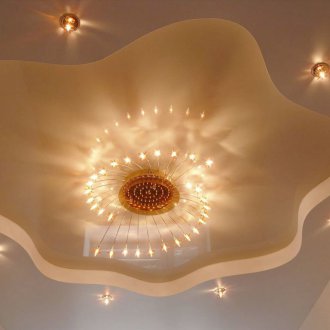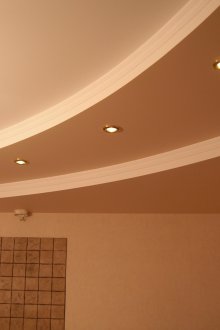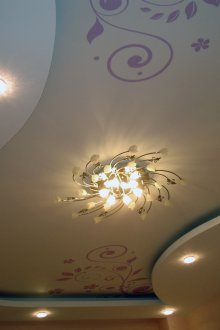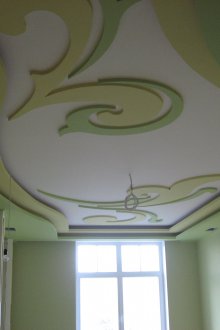Gypsum ceilings in the interior: features of the texture (24 photos)
Content
Plaster for quite a long time has been one of the most popular building and finishing materials. Variants of using gypsum in repair and construction are so diverse that it is quite difficult to focus on any particular technique, but among the whole variety of finishing methods, gypsum ceilings have gained deserved popularity, which are usually used in classic, modern, retro and other design directions premises.
The main advantages of gypsum structures
Gypsum ceilings - the reception of finishing almost any room. Ceiling structures of this type are characterized by an ideal surface, convenient and easy to use, and all thanks to the quality characteristics of the gypsum itself:
- the construction of ceilings and finishing work with the use of gypsum-containing materials is absolutely safe both during construction work and during the period of further residence in the room;
- gypsum is deservedly recognized as one of the most environmentally friendly and safe natural materials;
- gypsum materials are resistant to temperature extremes and are not subject to ignition;
- at any stage of processing the gypsum surface, the plaster lays evenly, and the formation of bumps and “bubbles” is excluded;
- excellent ability of ceilings to any additional processing, including painting.
Making their choice in favor of gypsum ceiling surfaces, both the employee and the customer can be sure of the flawlessness of the final result. Finishing the ceiling using gypsum mixtures allows you to achieve perfect smoothness on the surface of the ceilings, and complement the idea of the created design with intricate shapes, shapes and compositions. Wherever a gypsum ceiling structure is being erected, it is always beautiful, comfortable, safe and easy to maintain throughout its entire life. The additional use of layers of noise and heat insulation gaskets will provide reliable protection against extraneous external noise, as well as maintain heat and comfort inside the house.
Subtleties in the construction of gypsum structures
One of the reasons for the popularity of gypsum ceiling structures is their ability to hide even significant defects from view. For example, gypsum suspended ceilings allow quickly and without a trace to hide joints in floor slabs, cracks, damaged areas on surfaces, as well as get rid of overhanging wires, pipes and other communications. Decorative gypsum ceilings are suitable for most categories of rooms. Their installation will not take much time, regardless of the type of room being repaired.
For the implementation of the installation of single-level gypsum ceilings, deep knowledge in construction is simply not needed. Repair can be done with your own hands. It is enough to have the skills to use the construction level, as well as have experience using a punch and a chop thread.
Why is this ceiling decoration technique preferred even more often than standard plastering? Everything is simple. When installing gypsum structures, dirt from ongoing work, their complexity and duration are minimized.
The initial stage of installation work will be metering and, accordingly, marking. Depending on the general design project of the room, it is worth considering in advance all possible difficulties in the form of transitions, levels and joints of the structure. Asked how to make a ceiling without resorting to the help of professional decorators, it is worthwhile to prepare a standard set of working tools in advance:
- screwdriver;
- hammer drill;
- water level;
- roulette;
- a small hammer.
Often, masters advise using a grinder, but when installing a gypsum ceiling at one level, you can completely do without it. When marking up, taking into account the new height of the ceiling surface, you can tentatively evaluate the new height at which the new ceiling will be lowered and mounted. In most cases, the selected room design is also taken into account. So, for example, the classical style does not require multi-level structures, and modern trends, on the contrary, allow the use of two or more levels of the ceiling.
Plaster ceilings: two levels
If during the repair it was decided to do it exclusively on your own, then for the installation of a two-level ceiling with your own hands, it is better to make all the necessary preparations in advance:
- Correct (verified) marking of fastenings and profile location.
- Selection of the type of fixture depending on the complexity, levels and number of lighting sources.
- To speed up and simplify the installation of the structure, plasterboard sheets should be cut in advance.
- All profiles provided for fastening bends and joints must be bent first.
It is not difficult to erect ceilings and drywall sheets. It is enough to follow the recommendations of specialists, which are quite accessible on most specialized resources. Most often, preference is given to drywall for the improvement of bedrooms and kitchens. Whatever the design in the bedroom, any idea is quite affordable to implement with your own hands.
The bedroom is one of the rooms where two-level gypsum ceilings make it possible to achieve the effect of soft illumination due to the use of spot ceiling lamps of various capacities or a recessed LED strip between the ceiling levels. The last trick allows you to provide soft lighting in the room, effectively emphasizing decorative techniques, lighting solutions, as well as expand the space.
A backlit ceiling is an excellent solution for those who are not fans of familiar chandeliers and bulky lamps in the center of the ceiling. As lighting sources, the most modern lighting solutions can be used. The power and type of lighting allows you to achieve excellent results. Unexpectedly, but competently located light sources can completely change the room or hide existing deficiencies. Among the structures of drywall sheets can be identified:
- quite impressive weight;
- the inability to maintain the integrity of the sheets in the event of dismantling;
- gypsum sheets are not the most suitable material for decorating rooms with high humidity (with the exception of moisture-resistant types of drywall).
Recently, techniques for lighting rooms using LED strips have been most in demand. Such tapes allow you to achieve a soft backlight, and in several colors. The tapes are flexible, durable and safe to use. However, their only significant drawback may be a fairly high cost.
How to build a ceiling in the kitchen yourself?
The kitchen has long become a room not only for cooking and eating, but also a kind of lounge area. Modern kitchen projects are effectively complemented by bar counters, hanging cabinets and glass display cases. Kitchen sets with a backlight built into cabinets or the upper bar of the headset faded into the background.
It completely replaces the usual lighting, including the central chandelier, lamps placed on the entire surface of the kitchen ceiling. If you have patience and become familiar with the basic information materials, you can get a high-quality and beautiful ceiling in your own kitchen with your own hands. Here are some things to take care of in advance:
- Measure the area of the ceiling being repaired.
- Choose the optimal type of drywall sheets.
- Cut the workpiece in advance, depending on the idea of the final design.
- Prepare the cable, connection and cuts in the sheets for the location of the light sources.
- Correctly select and fix the profile guides, taking into account the number of levels, the type of sheets and the location of the furniture in space.
Why is drywall so attractive even for beginners in repair work? The fact is that sheets of impressive size are easily sawn into the necessary elements, and in addition they are able to bend into the necessary shapes and at the required angle. It is enough to moisten the cut elements evenly with a moderate amount of water. The ceiling in two levels is suitable for small rooms. The main thing is to pre-plan all the additional elements in the ceiling and the location of the fixtures.
The second level of sheets, as a rule, is attached above the working surface, that is, above the stove, sink or countertop. If the area of the kitchen allows, then the protrusions can be equipped above the dining area or above the recreation area. A simplified option is the construction of classical rectangular ceilings: with right angles and clear lines. If the idea involves the introduction of rounded shapes into the interior, then gypsum workpieces should be moistened in advance and given the desired shape. If the repair is done with your own hands, then you should not neglect the elementary help in supplying elements, cutting or fixing the profile.
Wherever finishing and repair work is carried out, drywall will achieve the desired result in the shortest possible time. Of course, like any other building and finishing material, gypsum sheet has a number of advantages and disadvantages. However, given its safety, many options for performance and a variety of brands and manufacturers, gypsum material for many years holds a leading position as a finishing material for all categories of premises.
